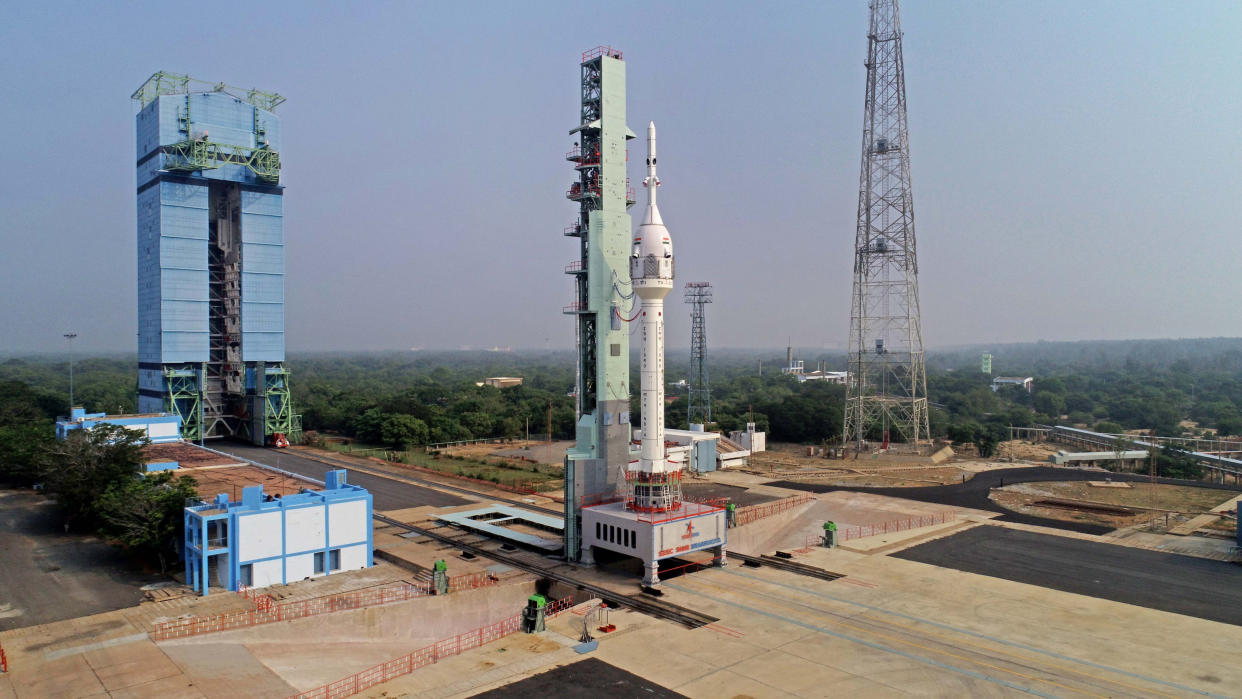India launching test flight tonight for future Gaganyaan astronaut mission: Watch it live
A test version of India's Crew Module and Crew Escape System sit atop their specially built rocket ahead of an emergency-escape test planned for Oct. 20, 2023.India will conduct a historic test of its Gaganyaan crew module tonight (Oct. 20), and you can watch the liftoff live.The uncrewed mission aims to prove out the emergency-escape system of the crew module, showing it can jet away from its rocket if there's a problem during launch. That's a crucial capability for the spacecraft, which is scheduled to launch astronauts for the first time in 2024 on the Gaganyaan mission to Earth orbit.Watch the test live here at Space.com, courtesy of the Indian Space Research Organisation, or directly via ISRO. Launch is scheduled for 10:30 p.m. EDT (0230 GMT and 8 a.m. India Standard Time on Oct. 21); coverage will begin 30 minutes before that.ADVERTISEMENTAdvertisementRelated: India tests parachutes for Gaganyaan crew capsule using a rocket sled (video)Tonight's test will send an unpressurized te


India will conduct a historic test of its Gaganyaan crew module tonight (Oct. 20), and you can watch the liftoff live.
The uncrewed mission aims to prove out the emergency-escape system of the crew module, showing it can jet away from its rocket if there's a problem during launch. That's a crucial capability for the spacecraft, which is scheduled to launch astronauts for the first time in 2024 on the Gaganyaan mission to Earth orbit.
Watch the test live here at Space.com, courtesy of the Indian Space Research Organisation, or directly via ISRO. Launch is scheduled for 10:30 p.m. EDT (0230 GMT and 8 a.m. India Standard Time on Oct. 21); coverage will begin 30 minutes before that.
Related: India tests parachutes for Gaganyaan crew capsule using a rocket sled (video)


Tonight's test will send an unpressurized test version of the Gaganyaan crew module (CM) and its attached crew escape system (CES) aloft from Satish Dhawan Space Centre, on the island of Sriharikota just off India's southeastern coast.
The spacecraft will fly atop a single-stage, liquid-fueled rocket built especially for this mission. During the Gaganyaan orbital flight next year, the CM will launch on India's powerful Launch Vehicle Mark-3 rocket.
If all goes according to plan, the CM and CES will separate from their rocket at an altitude of 10.6 miles (17 kilometers) tonight.
"Subsequently, the abort sequence will be executed autonomously commencing with the separation of CES and deployment of the series of parachutes, finally culminating in the safe touchdown of CM in the sea, about 10 km [6 miles] from the coast of Sriharikota," ISRO officials wrote in a mission description.
RELATED STORIES:
— India launches Aditya-L1 solar observatory, its 1st-ever sun probe
— India, NASA to cooperate on human spaceflight and planetary defense
— India's Chandrayaan-3 moon lander spotted from lunar orbit (photo)
India's space program is riding high at the moment. In August, the nation became the first to land a robotic probe — its Chandrayaan-3 lander-rover duo — in the moon's south polar region, which is thought to harbor large stores of water ice.
And in early September, India launched Aditya-1, its first-ever solar probe. The spacecraft will study our star from the Earth-sun Lagrange Point 1, a gravitationally stable spot about 1 million miles (1.5 million km) from our planet in the direction of the sun.
India has ambitious plans for its nascent human spaceflight program as well. Earlier this week, the nation announced that it aims to establish an Earth-orbiting space station by 2035 and put astronauts on the moon by 2040.
What's Your Reaction?










![[World] Janet Yellen asks China to co-operate on climate change action](https://www.9020blog.com/uploads/images/202307/image_650x433_64a97bc064181.jpg)






